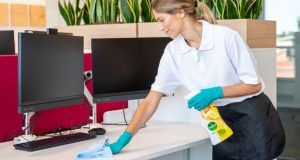Hygiene services provider, phs Group has launched a new campaign that looks at the impact of washroom practices on the wider environment.
The campaign, Beyond the Washroom Door, aims to get businesses thinking about not just their immediate working environment but also the implications for the wider environment, when it comes to their washroom services.
Flushing sanitary waste products instead of binning them, for example, can have a significant environmental impact. The waste products either become caught up in costly blockages or end up on our beaches or in our rivers and seas where they take hundreds of years to decompose. Failing to fit water saving devices on taps can result in thousands of litres being wasted, against a backdrop of world-wide water shortage.
Many businesses, that might have measures in place to dispose of food waste, paper waste and other front-of-house waste can often forget about the hygiene waste in their back-of-house operations. These hygiene waste products (nappies, sanitary waste products and incontinence waste products) end up in landfill where they take hundreds of years to decompose when there are other options available to use the waste as a source of energy for industry.
Paul Doble, phs Group Chief Commercial Officer, said: “Our Beyond the Washroom Door campaign shines a light on the implications of what happens in the washroom and highlights what can be done to improve business washroom practices to minimise their impact. In this case, what happens behind the washroom door most definitely doesn’t stay behind the washroom door. It extends far beyond it, to our wider environment.
“There is a wide range of environmentally innovative washroom products available, from water management systems and water efficient taps to air purifiers and recycled mats. We’re encouraging all businesses to think again about the products they put into their washrooms and consider the overall cost to the environment when making their purchasing decisions.”





